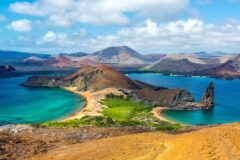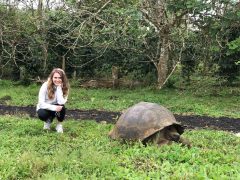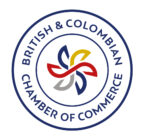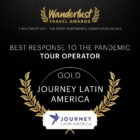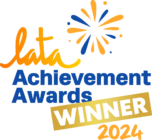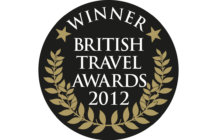Private Journeys
Value Galapagos and Peru
13 days from £5,000pp
(based on two people sharing & excluding flights)
Itinerary
 Map
Map
Day 1
Arrive in Quito, Ecuador, transfer to hotel in historic centre
The active volcano Guagua Pichincha glowers over the dynamic city which, at 2,850m, is one of highest capital cities in the world. Quito is divided into two contrasting districts. The modern zone is characterised by towering glass buildings and houses banks, international companies, hotels, shops and restaurants, while the central colonial area has well-conserved and recently spruced-up white-washed architecture, open air markets and graceful Spanish-style mansions and churches.

Stay at -
Casa Gardenia
Day 2
At leisure to explore the capital city.
Quito was the first city ever to be named a World Heritage site. We suggest you take your time to stroll around the historic core, which starts right outside your hotel. High on the agenda is a walk through the main plaza, the Plaza de Independencia, where you will see the government palace, the cathedral, and some of the most important churches built around the 16th and 17th centuries, including the monastery of San Francisco.
You might also head off to look at the buzzing modern sector, look round the shops, pop into a bar or have an evening meal.

Stay at -
Casa Gardenia
Day 3
Fly to the Galápagos islands; board your expedition vessel.
Drive from Baltra to Puerto Ayora on Santa Cruz Island, the largest town and port in the archipelago. Visit the nearby Charles Darwin Research Centre, a biological centre for the study and conservation of numerous species of Galápagos flora and fauna operated by the Charles Darwin Foundation. Later head through farmland into the lushly vegetated highlands of Santa Cruz where you will explore one of the ranches where the iconic giant tortoises can be seen in the wild. After the visit, return to Puerto Ayora to board your vessel.

Stay at -
Archipel I
Day 4
Visit Punta Cormorant and Post Office Bay (Floreana).
Floreana Island is probably best known for its colourful history involving buccaneers, pirates, whalers, convicts and later, colonists. In 1793, British whalers established the Post Office Barrel as a means of sending letters to and from England. This goodwill tradition has been upheld over the years, and even today visitors may drop off and pick up letters, without stamps, to be carried to faraway destinations.
Before dropping anchor at Post Office Bay you will visit Punta Cormorant, where pink flamingos dot the still waters of a bright lagoon and a white-sand beach provides the nesting ground for sea turtles (December to May). You also have the opportunity to snorkel off Champion Islet, one of the prime snorkelling sites of the archipelago offering underwater encounters with sea-lions, a dazzling array of tropical fish and penguins torpedoing just below the surface.

Stay at -
Archipel I
Day 5
Drop anchor at Gardner Bay; continue to Punta Suárez (Española).
Española Island is the most southerly in the archipelago, and reputedly one of the oldest – it was created by volcanic action up to three and five million years ago. At Gardner Bay there is a beach inhabited by sea lions and mockingbirds. Gardner and Osborn islets just off the coast are excellent for snorkelling. From Punta Suárez you can stroll along trails over lava rocks dotted with the nests of blue-footed boobies, waved albatross marine iguana that are endemic to the island. There is also a blowhole which forces water 30m up into the air – an impressive sight.

Stay at -
Archipel I
Day 6
Explore Punta Pitt and Cerro Brujo (San Cristóbal).
Punta Pitt is on the north eastern tip of San Cristóbal Island where endemic species include lava lizards, Chatham mockingbird and red-footed boobies. One of the oldest islands in the archipelago San Cristóbal is characterised by its eroded volcanic peaks in the north and densely vegetated slopes in the south. Cerro Brujo is a volcanic crater with very interesting lava formations. It has a white coral beach and a great open walking area with rewarding bird-watching.

Stay at -
Archipel I
Day 7
Visit Isla Lobos. Disembark and transfer to San Cristobal airport, fly to Lima, Peru.
As its name suggests Lobos islet is smothered with sea-lions frolicking on the rocks, their playful, ungainly movement accompanied by a cacophony of wailing. There is a nesting site for blue-footed boobies for you to investigate and you can snorkel here too. Transfer to San Cristóbal for your flight back to the mainland and connect with your flight to Lima. Transfer to your hotel in the Peruvian capital.

Stay at -
El Tambo Hotel
Day 8
Colonial Lima Tour and Larco Museum; fly to Cusco.
Lima is a vast, complex metropolis, with a history dating from the era of its wealth and importance to Imperial Spain to its current status as a dynamic, growing city of trade, industry and tourism.
Plaza San Martín, with its colonial churches, promenades and palaces marks the beginning of a guided tour that unearths much of the country’s turbulent past. En route, visit several palaces including the Torre Eagle Palace (built for the treasurer of the Royal Spanish fleet and considered to be the most striking of Lima’s 18th century mansions). Another building which borrows its architectural style from Baroque and Moorish Spain is the Monastery of San Francisco with its fascinating library and catacombs.
The final port of call is the private Larco Museum with its collection of beautifully modelled pottery, unique gold and silver work, mummies, and ceramics from pre-Inca civilisations. Afterwards, you will continue to Lima airport where you will board your flight up into the Andes to Cusco. Your accommodation is in a homely hotel established to support Cusco’s street children.

Stay at -
Hotel Los Ninos
Day 9
City tour of Cusco and nearby Inca sites.
Cusco, the former capital of the Inca Empire, is a fascinating mix of colonial churches, monasteries and convents, alongside extensive pre-Columbian ruins. Almost every central street has remnants of Inca walls and much of this ancient stonework now serves as foundations for more modern dwellings.
Your guided tour explores the magnificent main square with the 16th century cathedral and the church of Santo Domingo – built on the site of Qoricancha, Cusco’s major Inca temple.
Overlooking the city on the northern outskirts of Cusco lie the ruins of Sacsayhuamán, believed to have been both a fortress and ceremonial centre. The site has some magnificent Inca walls immaculately constructed from massive rocks. The visit also includes the nearby ruins of Inca staging post Tambo Machay, with its ceremonial fountains and bath, the military fort Puka Pukara and the temple of Q’enko with its sacrificial stone.

Stay at -
Hotel Los Ninos
Day 10
Guided tour of the Sacred Valley of the Incas.
Lying just a few kilometres from Cusco, the Sacred Valley of the Incas was once the bread-basket of the Inca empire, heavily populated in imperial times and scores of archaeological sites remain, where well-preserved ruins bear witness to the highly developed society that the Incas created.
The drive takes in several of the villages and temple fortresses that pepper the valley. You visit Pisaq, both the village, and the terraces and fort high above. The engineering and preservation are unrivalled.
From the flat valley floor the sculpted hillside rises up like a green staircase to the heavens. Continue along this picturesque, patchwork valley to the fortress/temple of Ollantaytambo where snow-capped Andean cordillera forms a stunning backdrop.
The fortress, the colonial grid plan and the Inca foundations are still intact and there are wonderful views down over the sloping hillsides and into the fertile valley. You’ll be spending the night in a homely hotel here.

Stay at -
El Albergue
Day 11
By train to Machu Picchu; guided tour of the site.
Transfer to Ollantaytambo, train to Machu Picchu, guided tour of the ruins, overnight.
Travelling for 90mins by train from Ollantaytambo, you reach the ruins of Machu Picchu. As the river Urubamba enters its narrow gorge between thickly-forested granite hills, there is room only for a single track, which hugs the right bank and passes through hamlets that are no more than a collection of shacks beside the railway. Close to the foot of the mountain on a saddle of which the citadel was built is the village of Machu Picchu, dedicated to serving the many visitors with artisan markets, bars and restaurants.
The majestic ruined city, reclaimed from tropical cloud forest, is reached by bus up a sinuous road, or on foot up a near vertical rocky path. The American explorer Hiram Bingham discovered it in 1911, by which time it was completely buried beneath jungle vegetation. It is perhaps the ruins’ location, on a ridge spur amid forested peaks and above a roaring river canyon, that most ignites the imagination.
You will have a guided tour of the ruins along one of the set trails, before heading back down to spend the night in Machu Picchu village.

Stay at -
Casa Andina Standard Machu Picchu
Day 12
Optional revisit to Machu Picchu; Return to Cusco.
Train times permitting, there’s the opportunity to return to the site of Machu Picchu. Getting up early and taking one of the first buses up to the site is well worth it. The ruins are virtually empty at that time and the early morning mists swirl around the surrounding mountain tops.
There is time for an optional hike to the summit of Huayna Picchu (although this must be booked in advance). Alternatively enjoy the thermal baths or walks in the village below. Later, travel to Cusco by rail and road, taking about 4 hours.

Stay at -
Hotel Los Ninos
Day 13
Fly to Lima and connect with international flight.
At Lima airport, connect with your international flight; or continue with an extension to your holiday.
Outline itinerary
Day 1
Arrive in Quito, Ecuador, transfer to hotel in historic centre
Day 2
At leisure to explore the capital city.
Day 3
Fly to the Galápagos islands; board your expedition vessel.
Day 4
Visit Punta Cormorant and Post Office Bay (Floreana).
Day 5
Drop anchor at Gardner Bay; continue to Punta Suárez (Española).
Day 6
Explore Punta Pitt and Cerro Brujo (San Cristóbal).
Day 7
Visit Isla Lobos. Disembark and transfer to San Cristobal airport, fly to Lima, Peru.
Day 8
Colonial Lima Tour and Larco Museum; fly to Cusco.
Day 9
City tour of Cusco and nearby Inca sites.
Day 10
Guided tour of the Sacred Valley of the Incas.
Day 11
By train to Machu Picchu; guided tour of the site.
Day 12
Optional revisit to Machu Picchu; Return to Cusco.
Day 13
Fly to Lima and connect with international flight.
Inspired by this trip
Our exciting range of articles on Latin America explore everything from iconic destinations and lesser-known cultural gems to delicious traditional recipes. You’ll also find exclusive travel tips, first-hand client reviews and the chance to get your personal questions answered by our travel experts.
Papagaio
Your edit for Latin American inspiration
Our exciting range of articles on Latin America explore everything from iconic destinations and lesser-known cultural gems to delicious traditional recipes. You’ll also find exclusive travel tips, first-hand client reviews and the chance to get your personal questions answered by our travel experts.
View Extraordinary Inspiration